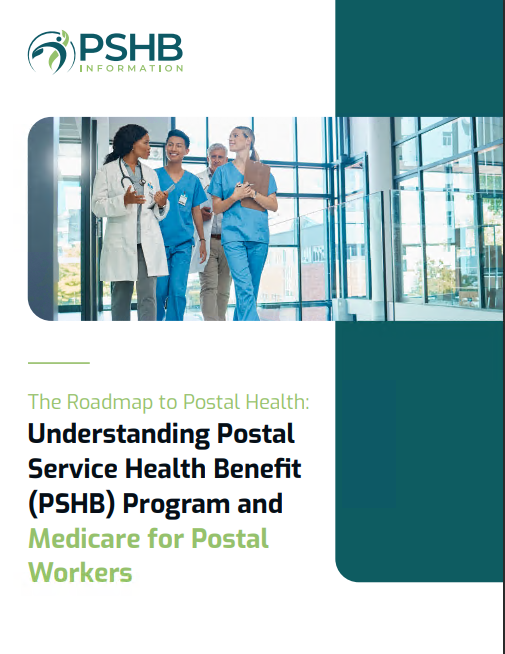Key Takeaways
-
Medicare Part C plans can appear financially attractive but often involve hidden costs, care restrictions, and unpredictability.
-
Postal retirees and workers must carefully weigh PSHB benefits against Part C limitations to avoid unexpected out-of-pocket expenses.
Why Medicare Part C Looks Like a Bargain at First
At a glance, Medicare Part C, also known as Medicare Advantage, seems to offer substantial savings compared to traditional Medicare paired with Postal Service Health Benefits (PSHB). Plans often advertise low premiums, bundled benefits, and simplified coverage under one umbrella. This design can feel efficient, especially when trying to consolidate medical, hospital, and sometimes prescription drug coverage.
Additionally, many Medicare Part C plans promote extra features such as:
-
Dental, vision, and hearing benefits
-
Wellness and fitness programs
-
Transportation services for medical appointments
While these perks look enticing, they come with limitations that many postal retirees and workers only recognize after enrollment.
The Trade-Offs Hidden in Medicare Part C
Despite the surface appeal, Medicare Part C plans require you to trade flexibility for structure. Unlike traditional Medicare combined with PSHB, Part C operates through private insurance networks. This structure introduces several potential pitfalls:
-
Network restrictions: You may only see certain doctors, hospitals, or specialists within a defined network.
-
Prior authorizations: Approvals may be needed before accessing tests, procedures, or specialists.
-
Geographic limitations: Coverage often depends on your specific service area, making travel or moving more complicated.
The simplicity of “all-in-one” coverage turns into a maze when you need care outside the expected channels.
Out-of-Pocket Costs That Add Up
One of the biggest misconceptions about Medicare Part C in 2025 is that it saves you money overall. While monthly premiums might be lower compared to PSHB plus Medicare Part B, the real costs surface elsewhere:
-
Copayments: Fees for primary care, specialists, urgent care, and emergency visits can vary widely.
-
Coinsurance: A percentage of costs for hospital stays, surgeries, or durable medical equipment may be your responsibility.
-
Deductibles: Some plans feature annual deductibles for both medical services and prescription drugs.
-
Maximum out-of-pocket limits: While these limits offer a financial ceiling, they can still be several thousand dollars a year.
By comparison, coordinating PSHB with Original Medicare often results in fewer financial surprises and more predictable costs.
Medicare Part C and Prescription Drug Coverage in 2025
Many Medicare Part C plans include Part D drug coverage. However, you may face limitations such as:
-
Restricted formularies: Not all medications are covered.
-
Tiered drug pricing: Certain drugs come with higher copays.
-
Step therapy requirements: You might have to try less expensive drugs before getting approval for the medication your doctor recommends.
This can cause frustration, particularly if you require specific medications that aren’t favorably covered under your plan.
Care Access Challenges for Postal Retirees
Postal retirees and workers enrolled in Medicare Part C plans frequently encounter barriers to care compared to those sticking with PSHB and traditional Medicare. Examples include:
-
Delays in care: Waiting for prior authorizations can postpone critical treatments.
-
Limited provider choices: You might have fewer options for specialists, especially in rural or underserved areas.
-
Out-of-network penalties: Receiving care outside the plan’s network could result in steep out-of-pocket costs or denied claims.
In contrast, PSHB combined with Original Medicare provides broader national access to providers, making it easier to seek specialized or out-of-area care without unnecessary hurdles.
Travel and Relocation Complications
If you travel frequently or plan to relocate during retirement, Medicare Part C presents significant challenges. Because many plans are regionally based, moving to another area often means you must:
-
Disenroll from your current plan
-
Choose a new Part C plan in your new area
-
Face disruption in continuity of care
Meanwhile, PSHB paired with Medicare continues to offer robust nationwide coverage without these restrictions.
How PSHB Offers More Predictable Coverage
For postal retirees, PSHB paired with Medicare provides:
-
Nationwide access: Freedom to see any provider that accepts Medicare.
-
Predictable cost-sharing: Lower out-of-pocket costs for many services.
-
Reliable prescription coverage: Consistent drug plan rules without excessive step therapy requirements.
-
Fewer prior authorizations: Smoother access to specialists and treatments.
While the premium structure may seem higher on the surface, the stability and predictability often translate to real savings over time.
Medicare Part C Changes in 2025 You Should Know
In 2025, certain regulatory updates impact Medicare Part C plans, including:
-
Caps on Part D out-of-pocket drug costs: Now limited to $2,000 annually.
-
Mid-year benefit notifications: Plans must notify enrollees about unused supplemental benefits by mid-year.
-
Reduced availability of extra perks: Fewer plans now offer benefits like transportation and over-the-counter allowances compared to 2024.
These changes aim to make Medicare Part C slightly more transparent but do not eliminate the network limitations and hidden costs that can arise.
Questions to Ask Before Choosing Medicare Part C
Before considering a Medicare Part C plan over coordinating PSHB and traditional Medicare, ask yourself:
-
Are my current doctors and specialists in the plan’s network?
-
What happens if I travel or relocate?
-
What are the plan’s prior authorization requirements?
-
What are the full out-of-pocket costs for hospitalizations or emergencies?
-
Are all my prescriptions covered affordably?
-
What is the annual maximum out-of-pocket limit, and can I realistically afford it if needed?
Answering these questions candidly can help you avoid surprises later.
PSHB and Medicare Together: A Long-Term View
Postal retirees and workers benefit from a unique advantage: access to PSHB plans even after retirement. When you combine this with Original Medicare Parts A and B, you generally experience fewer barriers to care, nationwide provider access, and lower, more predictable out-of-pocket costs.
Medicare Part C might look cheaper upfront, but the long-term financial exposure, potential access issues, and inconvenience during travel or relocation often outweigh the initial savings.
How to Decide the Right Path for You
Your decision should consider several personal factors, such as:
-
Your health status: Chronic conditions often require broader provider access.
-
Your lifestyle: Frequent travelers benefit from national networks.
-
Your finances: Out-of-pocket risks under Part C could burden your budget.
-
Your medication needs: Extensive prescriptions may complicate Part C coverage.
Ultimately, choosing PSHB alongside Medicare provides a safety net that better matches the healthcare needs of most postal retirees and workers in 2025.
Why Reviewing Plan Details Every Year Matters
Even if you opt for PSHB plus Medicare today, it’s crucial to review your coverage every Open Season from November to December. Medicare Part C and PSHB plans can change annually, adjusting their premiums, coverage rules, provider networks, and out-of-pocket costs.
Taking the time to review ensures you continue to have a plan that meets your evolving needs, whether you’re staying local or exploring new adventures in retirement.
Choosing Peace of Mind Over Illusions of Savings
While Medicare Part C can appear to offer financial relief, postal retirees and workers should look beyond the surface. Stable, comprehensive coverage through PSHB and Original Medicare typically better aligns with the realities of retirement healthcare in 2025.
If you have questions about your options, get in touch with a licensed insurance agent listed on this website who can help you weigh the pros and cons carefully.









